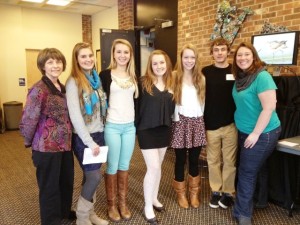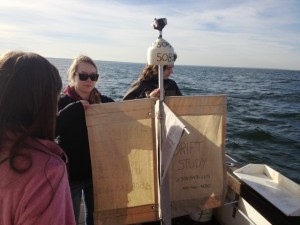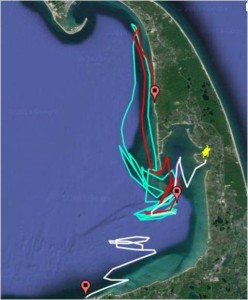A small team of Nauset High School students recently presented findings of their study of Cape Cod Bay currents at the March 15th Cape Cod Natural History Conference in Barnstable. They are one of only a handful of student groups to have appeared before the conference.
Under a project supported by Wellfleet Bay and the Gulf of Maine Institute, the students assembled “drifters” featuring canvas cloth sails attached to aluminum spokes, designed to move underwater. Each drifter was topped off with a buoy and an attached GPS device.
The drifters were released throughout November to coincide with the sea turtle stranding season. The goal of the experiment was to discover if the drifters followed the same paths as beached turtles and to shed some light on where hypothermic turtles float before they come ashore.
“We know wind direction plays a big role in where they wash up,” says sanctuary director Bob Prescott. “But we don’t know much about the currents in Cape Cod Bay. What’s known is mostly anecdotal.”
The students released a total of 6 drifters. Three of them washed ashore in only a couple of days. But the other three took interesting tracks that may not have been influenced by wind alone. “Those two drifters that both ran up to Truro (see photo at right) and then turned back are interesting,” Bob notes. Generally, the drifters ended up beaching fairly close to where sea turtles did. Bob says the next stage of the study should include looking at hourly wind directions and speeds to try to tease out where tides and/or currents may come into play.
A big thank you to the drifter builders–Wellfleet Bay property manager James Nielsen and citizen science volunteer Ann Vaughn.




